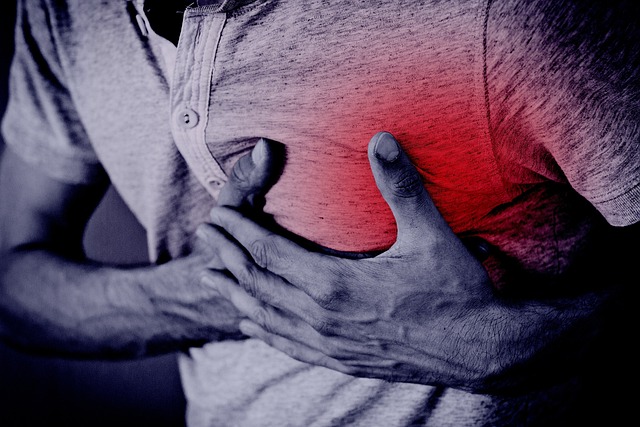
The connection between plastic and heart disease is an emerging area of concern in environmental health research.
 Here’s a breakdown of what scientists currently understand:
Here’s a breakdown of what scientists currently understand:
1. Microplastics and Nanoplastics
These tiny plastic particles have been found in human blood, lungs, and even in the heart during surgery. They can enter the body through:
- Inhalation (airborne particles)
- Ingestion (contaminated food or water)
- Skin contact (less common)
2. Potential Impact on Heart Health
While research is still developing, early studies suggest that microplastics may contribute to heart disease in the following ways:
- Inflammation: Microplastics can trigger chronic inflammation, a known risk factor for atherosclerosis (hardening of the arteries)
- Oxidative Stress: These particles may increase oxidative stress, damaging cells and blood vessels
- Chemical Additives: Plastics often contain toxic additives like BPA (bisphenol A) and phthalates, which are linked to high blood pressure, insulin resistance, and cardiovascular disease
3. Recent Findings
A 2024 study found microplastics in the arterial plaques of people undergoing heart surgery, suggesting a direct link between plastic exposure and cardiovascular issues.
Here’s a detailed guide below on how to reduce your exposure to plastics in daily life—especially the types linked to potential heart disease and other chronic health problems.
Why Reduce Plastic Exposure? Plastic items, especially single-use plastics, contain or break down into microplastics and release toxic chemicals like:
- BPA (Bisphenol A)
- Phthalates
- Styrene
- Dioxins
These chemicals may disrupt hormones, increase inflammation, and lead to oxidative stress, all of which are linked to cardiovascular disease, diabetes, and certain cancers.
Steps to Reduce Plastic Exposure
1. In the Kitchen
Avoid Plastic Containers: Switch to glass, stainless steel, or ceramic containers for storing food.
Especially avoid heating food in plastic containers (even “microwave safe” ones), as heat increases chemical leaching.
Ditch Plastic Wrap and Bags: Use beeswax wraps, silicone bags, or glass containers instead of cling wrap and zip-top plastic bags.
Choose Fresh or Frozen: Buy fresh or frozen produce rather than canned, since many cans are lined with BPA-containing resins.
Cook at Home More Often: Takeout food is often packaged in plastic or Styrofoam, which can leach chemicals into hot food.
 2. In Drinking Habits
2. In Drinking Habits
Use a Reusable Bottle: Stainless steel or glass water bottles are safest. Avoid reusable plastic bottles if unsure of the material.
Filter Tap Water: Microplastics have been found in many tap water supplies. Use a high-quality water filter (look for ones that remove microplastics and heavy metals).
Avoid Bottled Water: Most bottled water is stored in plastic, and microplastics have been found in over 90% of tested brands.
3. In Personal Care
Avoid Products with Microbeads: These are tiny plastic particles in some toothpastes, exfoliators, and face washes. Look for labels that say “microbead-free.”
Choose Clean Beauty Products: Use shampoos, lotions, and cosmetics that come in plastic-free packaging or contain natural ingredients without synthetic polymers.
Skip the PVC Shower Curtain: Vinyl (PVC) shower curtains off-gas toxic fumes. Choose cotton, PEVA, or fabric liners instead.
 4. In the Home
4. In the Home
Air Purifiers & Ventilation: Microplastics can be airborne. Use an air purifier with a HEPA filter and ventilate your home regularly.
Reduce Dust: Dust can contain microplastics from carpets, furniture, and electronics. Vacuum with a HEPA filter and wet-dust surfaces often.
Avoid Synthetic Textiles: Clothes, curtains, and rugs made from polyester, acrylic, or nylon shed microplastics. Choose natural fibers like cotton, linen, or wool.
5. When Shopping
Buy in Bulk or Use Refilleries: This reduces packaging waste. Bring your own containers if the store allows.
Bring Your Own Bags: Avoid plastic grocery and produce bags by using cloth or mesh alternatives.
Check for Recycling Codes: Avoid plastics labeled #3 (PVC), #6 (PS), and #7 (Other)—they often contain harmful additives.
6. For Babies and Children
Avoid Plastic Bottles and Toys: Use glass baby bottles and BPA-free or wooden toys.
Don’t Microwave Baby Food in Plastic: Always transfer baby food to glass or ceramic before heating.
Long-Term Benefits
Reducing plastic exposure supports heart health:
- Lowers risk of hormonal disorders, metabolic disease, and cancer
- Helps reduce environmental pollution, supporting overall planetary health
Minu v







